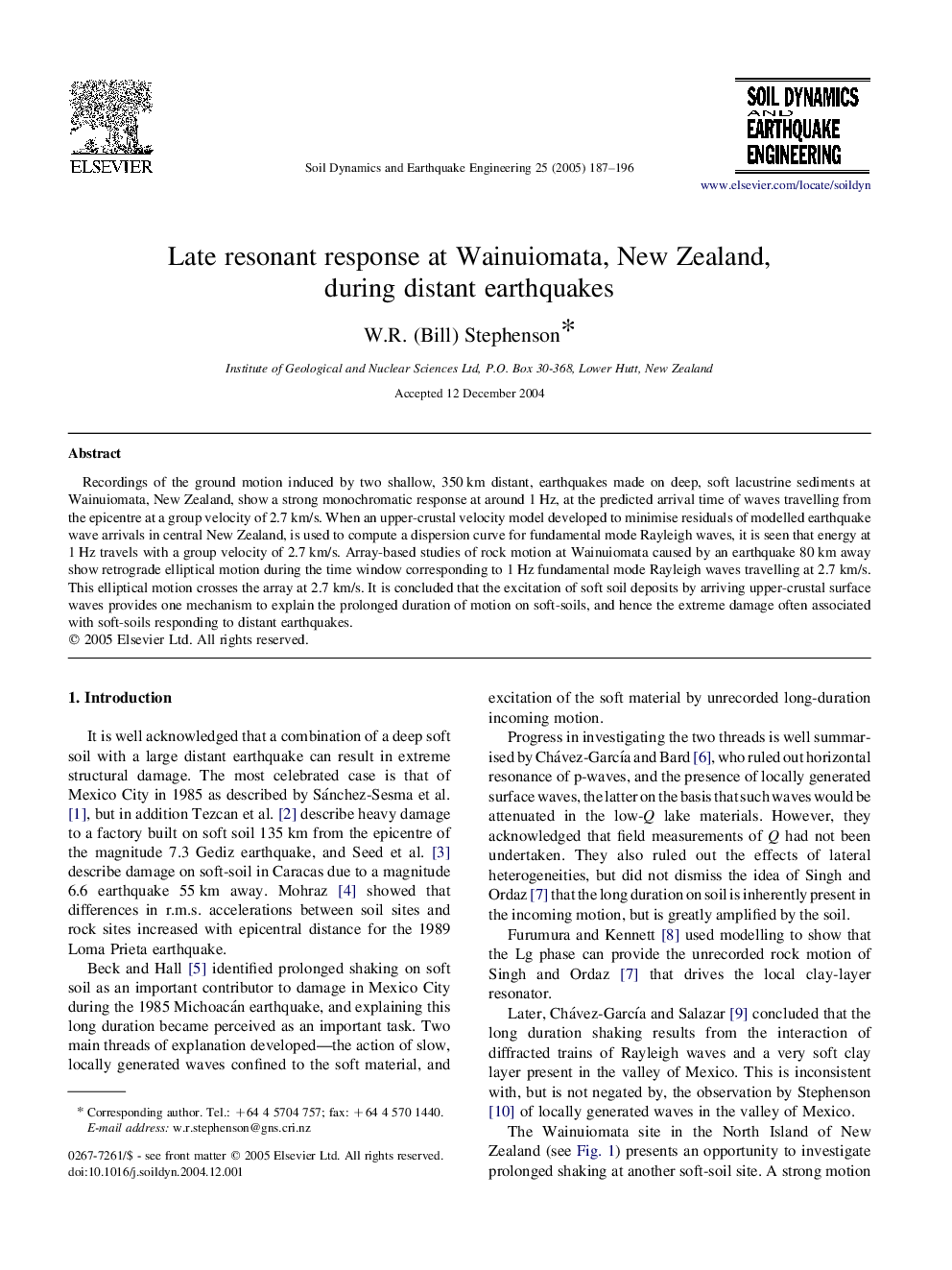| Article ID | Journal | Published Year | Pages | File Type |
|---|---|---|---|---|
| 10295079 | Soil Dynamics and Earthquake Engineering | 2005 | 10 Pages |
Abstract
Recordings of the ground motion induced by two shallow, 350Â km distant, earthquakes made on deep, soft lacustrine sediments at Wainuiomata, New Zealand, show a strong monochromatic response at around 1Â Hz, at the predicted arrival time of waves travelling from the epicentre at a group velocity of 2.7Â km/s. When an upper-crustal velocity model developed to minimise residuals of modelled earthquake wave arrivals in central New Zealand, is used to compute a dispersion curve for fundamental mode Rayleigh waves, it is seen that energy at 1Â Hz travels with a group velocity of 2.7Â km/s. Array-based studies of rock motion at Wainuiomata caused by an earthquake 80Â km away show retrograde elliptical motion during the time window corresponding to 1Â Hz fundamental mode Rayleigh waves travelling at 2.7Â km/s. This elliptical motion crosses the array at 2.7Â km/s. It is concluded that the excitation of soft soil deposits by arriving upper-crustal surface waves provides one mechanism to explain the prolonged duration of motion on soft-soils, and hence the extreme damage often associated with soft-soils responding to distant earthquakes.
Related Topics
Physical Sciences and Engineering
Earth and Planetary Sciences
Geotechnical Engineering and Engineering Geology
Authors
W.R. (Bill) Stephenson,
